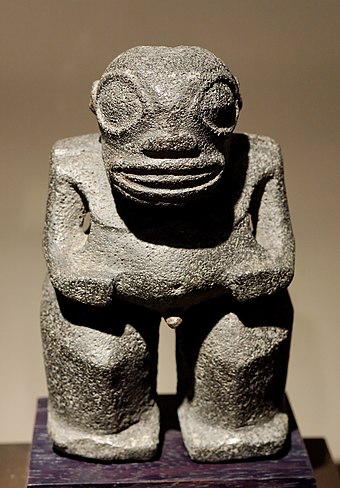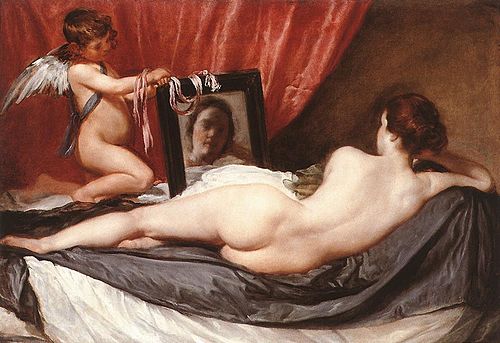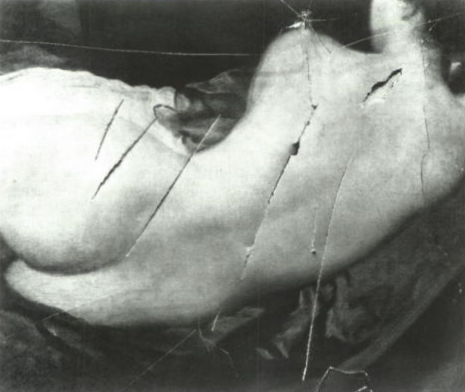
Tiki statuette from the Marquesas Islands (currently in the Louvre)
Those who grew up watching The Brady Bunch re-runs on “Nick @ Nite” (or the popular series Scrubs) may recall a set of spooky episodes: the family’s ill-fated trip to Hawaii. What made the story arc so memorable was not the beautiful scenery, but that the narrative included a mysterious ancient curse. The curse comes into play when Bobby finds an ancient cultural artifact – a small tiki statue – and brings it home. Viewers quickly learn that whoever holds the statue experiences misfortune. The family ultimately returns the statue to a cave in order to break the curse, thus restoring peace and harmony to America’s favorite (1970s) TV family. As for Scrubs, main protagonists Turk and JD wear replicas of the tiki statue and face their own misfortunes, which they attribute to the curse.
These episodes are obviously fictional, but they illustrate an important aspect of cultural heritage; namely, how the provenance of an artwork or cultural artifact can influence modern perceptions and inspire stories that last for generations. In the case of the tiki statue, the modern misfortune attributed to the statue by the Bradys, Turk, and JD became part of its cultural identity.
Provenance
As we have highlighted in previous blog posts, provenance is an essential aspect of cultural heritage objects, as it reflects their history and cultural significance within a larger context. Not only does provenance delineate the proper origin and ownership of a piece, it also illuminates how contemporary culture influences the way an artifact is perceived in modern society. As part of our series of Halloween-themed posts, we are examining paintings, artifacts, and architectural sites whose provenance includes a spooky legend in modern culture. (You can also find last year’s “Unlucky Mummy” blog post here and the ghoulish frescoes of a Roman church here.
A Cursed Painting
 The Rokeby Venus is Velázquez’s only surviving nude, and it is known to have a mysterious aura with a tendency to incite psychosis in its viewers. Diego Velázquez, a leading artist in King Phillip IV’s court in Spain, is the artist behind the hauntingly beautiful Rokeby Venus. More correctly referred to as The Toilet of Venus, the work goes by the name The Rokeby Venus in many modern descriptions after the English mansion (Rokeby Park) from where it was located from 1813-1906. The work depicts the goddess Venus gazing at a mirror being held by Cupid, who is shown as serving the goddess while she reclines. The hazy, unfocused gaze of the goddess makes it unclear whether Venus is using the mirror to view her own reflection or whether she is staring judgmentally at the viewer. This visual trick serves to both captivate and unnerve the audience, a dynamic that is particularly heightened by the historical origin of the work.
The Rokeby Venus is Velázquez’s only surviving nude, and it is known to have a mysterious aura with a tendency to incite psychosis in its viewers. Diego Velázquez, a leading artist in King Phillip IV’s court in Spain, is the artist behind the hauntingly beautiful Rokeby Venus. More correctly referred to as The Toilet of Venus, the work goes by the name The Rokeby Venus in many modern descriptions after the English mansion (Rokeby Park) from where it was located from 1813-1906. The work depicts the goddess Venus gazing at a mirror being held by Cupid, who is shown as serving the goddess while she reclines. The hazy, unfocused gaze of the goddess makes it unclear whether Venus is using the mirror to view her own reflection or whether she is staring judgmentally at the viewer. This visual trick serves to both captivate and unnerve the audience, a dynamic that is particularly heightened by the historical origin of the work.
Velázquez’s seductive portrayal of the goddess of love would have been a bold choice in light of the highly conservative mores of the Spanish court, heavily influenced by Catholicism. While modern viewers may find the piece less shocking than its original audience, the Rokeby Venus could be read as intentionally prurient, given Spanish politics at the time.
Psychosis
Venus’s overt sexuality and youthful beauty pinpoint the origins of the alleged curse. When the work was inherited by the 13th Duchess of Alba as part of her duchy, the renowned beauty hung the portrait on display in her quarters. But like the portrait of Dorian Gray brought to life by Oscar Wilde centuries later, the painting became a sinister reminder of the viewer’s mortality. According to rumor, the aging Duchess seems to have been unfamiliar with the concept of aging gracefully. Incensed by the unchanging youthfulness of Venus, while she, herself, battled the demons brought on by her deteriorating looks, the Duchess is believed to have committed suicide in response. Though there may have been other explanations for her tragic early death, her family and friends attributed the cause to none other than The Rokeby Venus.
When the work was next acquired by Don Manuel Godoy following the Duchess’s alleged suicide, the curse of The Rokeby Venus once again brought about its owner’s downfall. Prior to owning the painting, Godoy was – by all accounts – truly living his best life. As a respected and celebrated politician, he became extremely influential in the Spanish Royal Court. Then, Napoleon came into the picture. Suffice to say, it is difficult to blame the entire collapse of the Spanish imperial empire on a single individual. Even so, Spanish citizens gave it their best shot when they elected Godoy as their universal scapegoat. Godoy was eventually exiled from Spain and became a prisoner of Napoleon himself, later living a life of obscurity in Paris. His extreme reversal of fortune was blamed on the cursed Rokeby Venus.
After ruining Godoy’s life, The Rokeby Venus seemed content to withdraw for a while. During the next few changes of ownership, there were no reports of misfortune brought on by the painting. But then, in 1914, The Rokeby Venus curse reared its head. After being purchased by the National Gallery in London, the painting cast its malevolent spell on its next (and most recent) victim.

The slashed painting
Late on the night of March 10, 1914, English suffragette Mary Richardson broke into the National Gallery. She was armed with a meat cleaver and a single-minded goal: to destroy The Rokeby Venus. After slashing the painting seven times, she was apprehended by museum guards, who were perplexed: why attack this canvas? By way of motive, “Slasher Mary” (as she became known in the press) claimed that the Venus’ bare, rotund backside caused men to “gape at her” all day long, as if spellbound, when they visited the museum. She emphasized that the slashing was done in protest of the lascivious male gaze, and to support the advancement of women in their battle for political rights after the arrest of fellow suffragette Emmeline Pankhurst. In light of her statements, we are left to wonder whether Mary was really driven by political dogma, or whether she too was a victim of the madness said to be brought on by the painting’s display, which had lain dormant for a century. While the real answer is unknown, the spooky season invites us to imagine that Slasher Mary was driven to the brink by the painting’s alluring power.
An Unusual History
No matter what your opinion is of The Rokeby Venus’ alleged curse, the documented history of strange occurrences attributed to its ownership has become an important part of the work’s provenance. The stories behind The Rokeby Venus illustrate how all aspects of a work’s life – beginning with its origin and continuing through its interaction in a modern context – create a vivid tapestry of life behind what would otherwise be a merely decorative object. How a culture understands and makes sense of a piece gives the piece context, longevity, and life. For now, we continue to admire The Rokeby Venus, but let’s do so from afar.
The Rokeby Venus’s Provenance
- A painting depicting the goddess Venus by Diego Rodrigo de Silva y Velázquez (exact year unknown, dated by art historians 1647-1651)
- Listed in inventory of Spanish Marquis Don Gaspar de Hero (until 1688)
- Taken by heiress to Duchy of Alba (1688)
- Acquired by Don Manuel Godoy (1688-unknown date)
- Godoy exiled from Spain during Napoleonic Wars; painting’s ownership unknown
- Acquired by John Bacon Sawrey Morritt through British art sale (Unknown date – 1906)
- Purchased by National Gallery (1906-present)